This Is Not Your Father’s Tomahawk Cruise Missile
The new Block V can run down enemy ships and blast them with a half-ton high explosive warhead.
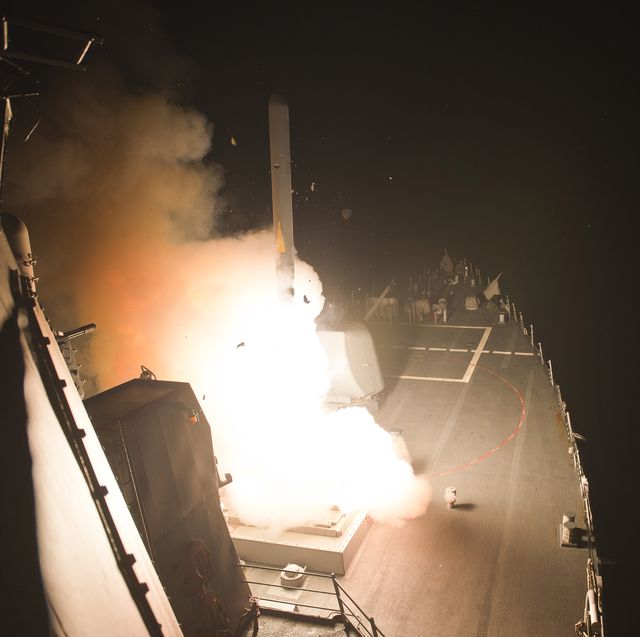
Gear-obsessed editors choose every product we review. We may earn commission if you buy from a link. Why Trust Us?
- The new missiles can attack enemy ships at sea or land targets with a new multi-effect warhead.
- The Tomahawk design is nearly half a century old but with the help of rolling upgrades has remained a viable weapon system.
The Tomahawk cruise missile, one of the oldest missiles in U.S. military service, is set to receive a new set of capabilities designed to help keep potential enemies in check.
➡ You love badass military tech. So do we. Let's nerd out over it together.
The missile’s new Block V configuration will include both new anti-shipping and land attack variants, boosting the capabilities of the U.S. Navy surface warships that carry them.
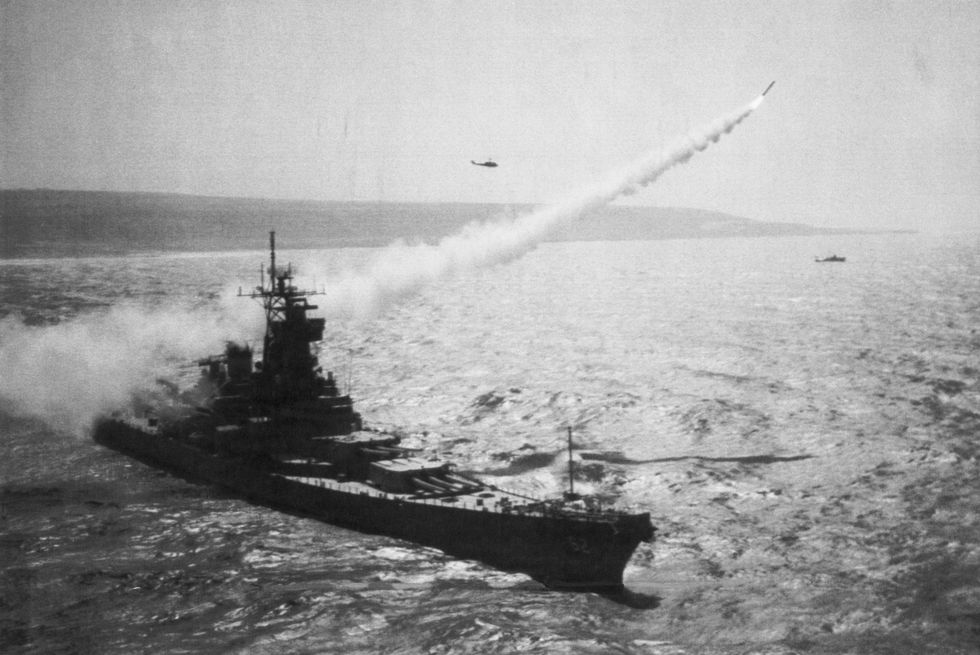
The Tomahawk is one of the most effective missiles in the Pentagon’s history. The missile, which General Dynamics first designed in the 1970s, was one of the first truly effective cruise missiles. Unlike traditional missiles that use rocket motors, fly high altitudes, and travel at Mach 2+ speeds, cruise missiles use turbojet engines, fly at low altitudes, and travel at subsonic speeds.
Most missiles are designed to sprint to their targets; Tomahawk is designed to run a marathon. Engineers chose a liquid fuel-sipping turbojet engine because it enabled greater range than a rocket engine of roughly the same size. A slower speed also makes low altitude flight more viable, which in turn makes the missile much more difficult to detect by radar. Today, most advanced countries operate similar low-flying subsonic missiles, including Russia, China, France, and South Korea.

Despite its age, the Tomahawk has stayed in the game through a series of progressive upgrades. The original Block I version included both nuclear-tipped and anti-ship versions of the missile. Block II introduced land attack capabilities, like those demonstrated during the 1991 Gulf War, with missiles striking Iraqi Air Force airfields and daytime targets across the Iraqi capital of Baghdad. Block III added GPS, eliminating a time-consuming programming system that required 80 hours to plot a missile’s course as well as a loitering capability.
Block IV Tomahawks added more features, including the ability to be re-routed to new targets in mid-flight. Block IV missiles also feature a camera and datalink, allowing a missile to send imagery back to friendly forces. If a Tomahawk discovers its target already struck or civilians are crowding the target area, the missile can be re-routed to destroy something else.
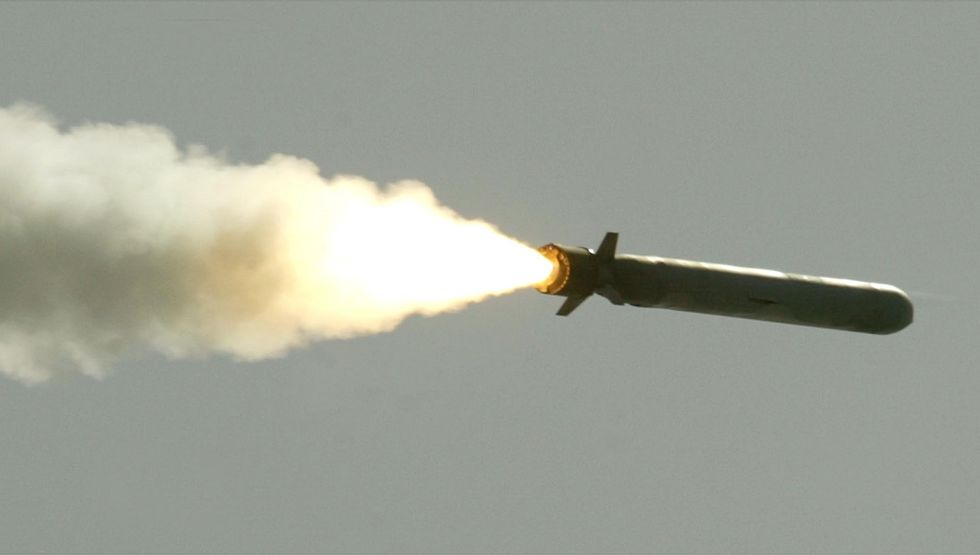
Now, Block V is where it gets really interesting.
The newest variant adds upgraded navigation and communications gear to older Tomahawks, electronics that, according to Defense News , make it easier to work through electronic warfare jamming and more difficult for enemy radars to detect. That’s important, because once detected, subsonic cruise missiles are relatively easy to shoot down. Block V then forks into two missiles, Block Va and Block Vb.

The Coolest Military Toys

GRTVF 1:18 Scale RC Tank German Tiger Panzer

Tletiy Soviet T34 Mini RC Tank
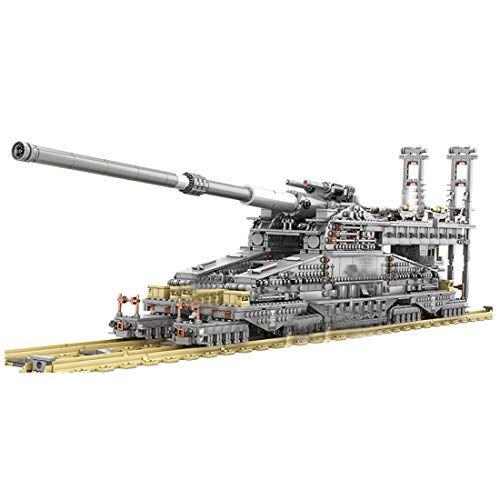
PeleusTech 3,846-Piece Model WWII German Dora Cannon

Big Bang 9-Inch 6F Light Field Vintage Cannon
Block Va essentially turns the cruise missile into an anti-ship missile. Also known as Maritime Strike Tomahawk, Block Va adds a seeker kit, including sensor, giving it the ability to strike moving targets at sea at ranges in excess of 1,000 miles. It’s not clear if Block Va can still strike land targets.
Block Vb is more oriented toward striking land targets with the new Joint Multiple Effects Warhead (MEWS). The weapon is a bit mysterious, but it seems to be a 1,000-pound warhead capable of striking both surface and underground hardened targets, including “integrated air defense systems and weapons of mass destruction” .
The great thing about Block V is that, unlike the Navy’s current anti-ship missile, it doesn’t need separate launchers. Block Vs will fit in any Mk. 41 vertical launch system silo—the same silo that currently carries Standard anti-air missiles, the SM-3 missile interceptor, Evolved Sea Sparrow interceptor missiles, and vertical launch anti-submarine rockets.
Today’s guided missile cruisers carry 122 silos, while destroyers carry between 90 and 96 silos. Theoretically, a cruiser could carry up to 122 Block Va missiles, though a more rounded mix of all of the above is preferred. Block V will also arm U.S. Navy submarines.
Like a lot of weapons in America’s arsenal, the Tomahawk missile is old—at least in concept. What started out as a nuclear-capable missile can now hunt down warships at 1,000 miles and attack hardened underground targets. The missile’s ability to adapt with the times, take on new roles, and reinvent itself means it will be a potent weapon system for easily another decade to come.
Now Watch This:
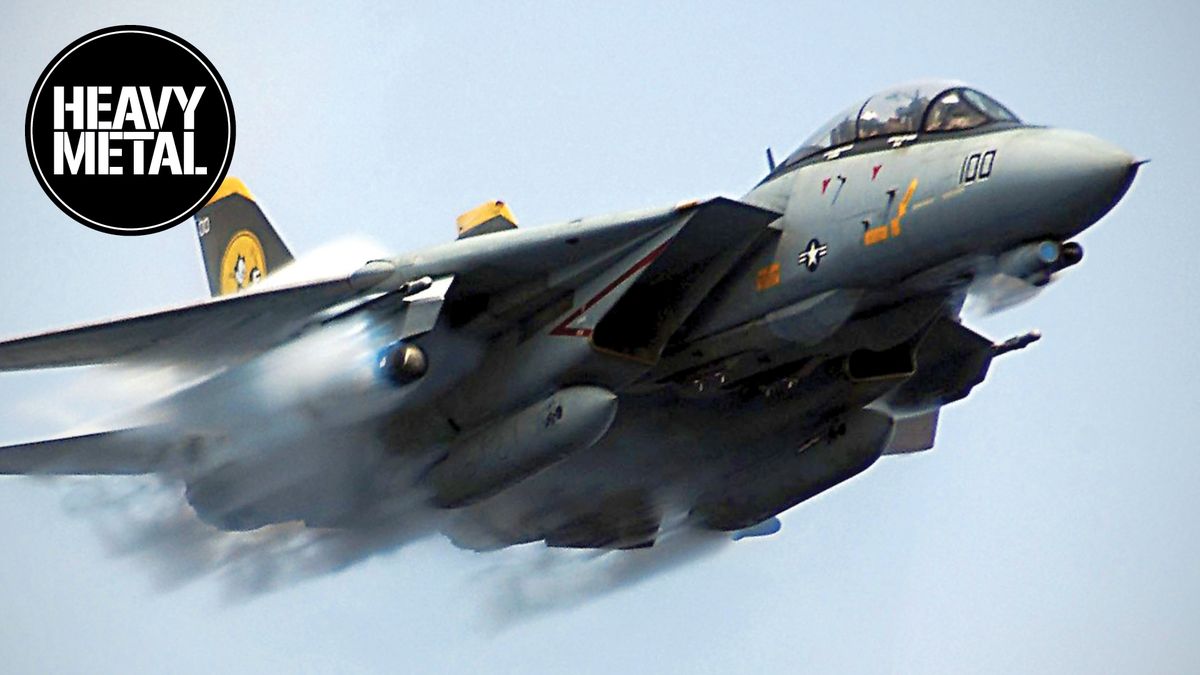
Kyle Mizokami is a writer on defense and security issues and has been at Popular Mechanics since 2015. If it involves explosions or projectiles, he's generally in favor of it. Kyle’s articles have appeared at The Daily Beast, U.S. Naval Institute News, The Diplomat, Foreign Policy, Combat Aircraft Monthly, VICE News , and others. He lives in San Francisco.
.css-cuqpxl:before{padding-right:0.3125rem;content:'//';display:inline;} Weapons .css-xtujxj:before{padding-left:0.3125rem;content:'//';display:inline;}
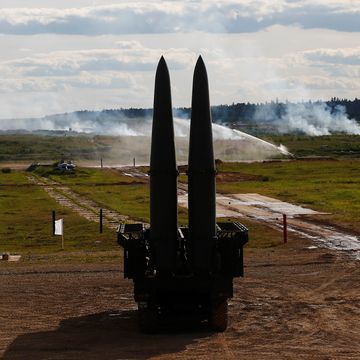
Ukraine Is Using an Ancient Weapon on Russia

US Army Accepts Delivery of First M10 Assault Gun

A New Hypersonic Missile Will Give the F-35 Fangs

The U.S. Has Built an Unstoppable Microwave Weapon

The Army Has a Plan to Kill Drones

Army: The Days of Towed Artillery Are Over

The US Army Has Deployed Lasers to a Combat Zone

The Manhattan Project's Deadly Legacy in St. Louis
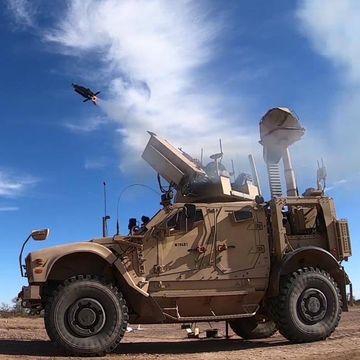
The Army Is Clearing Out for Coyote Drone Hunters
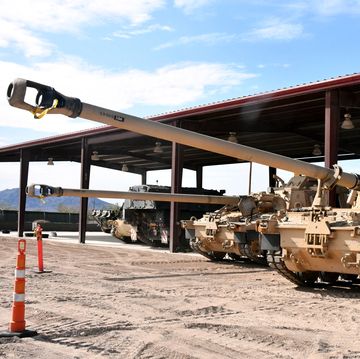
This Long-Range Howitzer Has Met Its Achilles Heel

Inside the Development of America's New Nuke
- Books & Press
- Proceedings
- Naval History

Suggestions
Trending topics, report to congress on sea-launched nuclear cruise missile.
The following is the April 25, 2022, Congressional Research Service In Focus report, Nuclear-Armed Sea-Launched Cruise Missile (SLCM-N).
From the report
In its FY2023 budget request, the Navy eliminated funding for research and development into a new nuclear-armed sea-launched cruise missile (SLCM-N). The Navy indicated that the program was “cost prohibitive and the acquisition schedule would have delivered capability late to need.” According to the Navy, this cancellation would save $199.2 million in FY2023 and $2.1 billion over the next five years. Press reports also indicate that this decision is supported in the Biden Administration’s Nuclear Posture Review (NPR).
The United States first deployed a nuclear-armed version of the Tomahawk land-attack cruise missile (TLAM-N) in the mid-1980s. The missiles were deployed on both surface ships and attack submarines. With a range of 2,500 kilometers (around 1,550 miles), the missiles were not considered part of the U.S. strategic nuclear forces (see CRS In Focus IF10519, Defense Primer: Strategic Nuclear Forces, by Amy F. Woolf) and, therefore, did not count under the limits on warheads or delivery vehicles in U.S.-Soviet arms control agreements.
In September 1991, at the end of the Cold War, President George H.W. Bush announced that the United States would withdraw all land-based tactical nuclear weapons (those that could travel less than 300 miles) from overseas bases and all sea-based tactical nuclear weapons from U.S. surface ships, submarines, and naval aircraft. The Navy withdrew the TLAM-N missiles by mid-1992. It eliminated the nuclear mission for U.S. surface ships but could have returned TLAM-N to attack submarines. Many viewed the U.S. ability to return these missiles to deployment on short notice as a part of the U.S. effort to reassure allies in Asia of the U.S. commitment to their security.
In 2010, the Obama Administration’s NPR recommended that the Navy retire the TLAM-N missiles. It indicated that “this system serves a redundant purpose in the U.S. nuclear stockpile” as one of several weapons the United States could deploy in support of U.S. allies. It concluded that because “the deterrence and assurance roles of TLAM-N can be adequately substituted by these other means,” the United States could continue to support allies in Asia without maintaining the capability to redeploy TLAM-N missiles. The Navy completed the retirement of these missiles by 2013.
The Trump Administration, in effect, reversed this decision, noting in the 2018 NPR that a nuclear-armed sea-launched cruise missile (now known as SLCM-N) would provide the United States with “a needed non-strategic regional presence” that would address “the increasing need for flexible and low-yield options.” This is intended to strengthen deterrence of regional adversaries and assure allies of the U.S. commitment to their defense. The NPR also indicated that SLCM-N could serve as a response to Russia’s violation of the 1987 Intermediate-Range Nuclear Forces (INF) Treaty and provide Russia with an incentive to negotiate reductions in its nonstrategic nuclear weapons.
SLCM-N was one of two systems that the 2018 NPR identified as a way to “strengthen deterrence of regional adversaries.” The Navy deployed a low-yield version (with less than 10 kilotons, rather than 100 kilotons, of explosive power) of the W76 warhead on its long-range submarine-launched ballistic missile in 2019 (see CRS In Focus IF11143, A Low-Yield, Submarine-Launched Nuclear Warhead: Overview of the Expert Debate, by Amy F. Woolf). The Navy conducted an Analysis of Alternatives in support of the SLCM-N from 2019-2021, and expected to begin the development of the missile in 2022 and achieve operational capability late in the 2020s.
In its FY2022 budget request, the Biden Administration sought $5.2 million in DOD funding for research and development into the missile and $10 million for the National Nuclear Security Administration (NNSA) to work on a warhead that would be carried by the SLCM-N. At the same time, the Administration indicated that it would review the program as a part of its NPR.
After the Navy eliminated funding for SLCM-N in its FY2023 budget request, some Members of Congress asked General Milley, the Chairman of the Joint Chiefs of Staff, and Secretary of Defense Austin whether they supported the decision. General Milley said he continued to support SLCM-N because the President “deserves to have multiple options to deal with national security situations.” But he later noted that the United States has “lots of options and we have a significant nuclear capability.” Secretary Austin also recognized the value of the SLCM-N but stated that “the marginal capability that this provides is far outweighed by the cost.”
Download the document here .

U.S. Naval Institute Staff
Get usni news updates delivered to your inbox.
Email address:
Frequency Daily Weekly All
Related Topics
- Surface Forces
Related Posts

Carrier USS Dwight D. Eisenhower Back in Red Sea, Passes 200-Day Deployment Mark
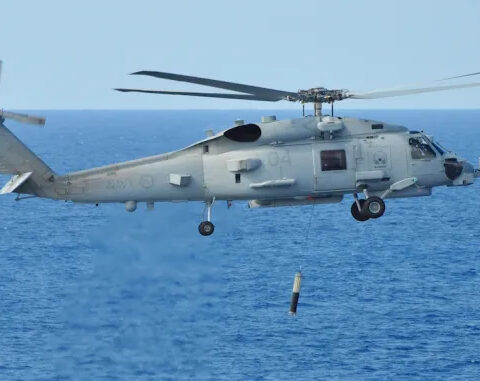
Chinese Fighter Drops Flares in Front of Aussie Helo in ‘Unprofessional’ Action, Say Officials
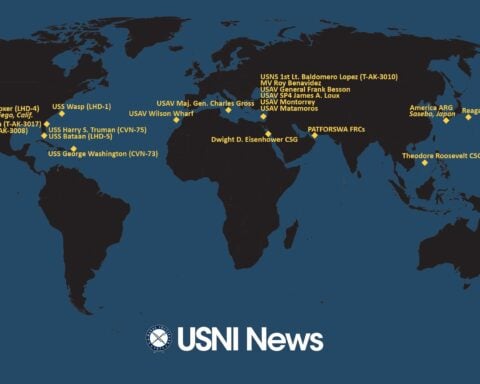
USNI News Fleet and Marine Tracker: May 6, 2024
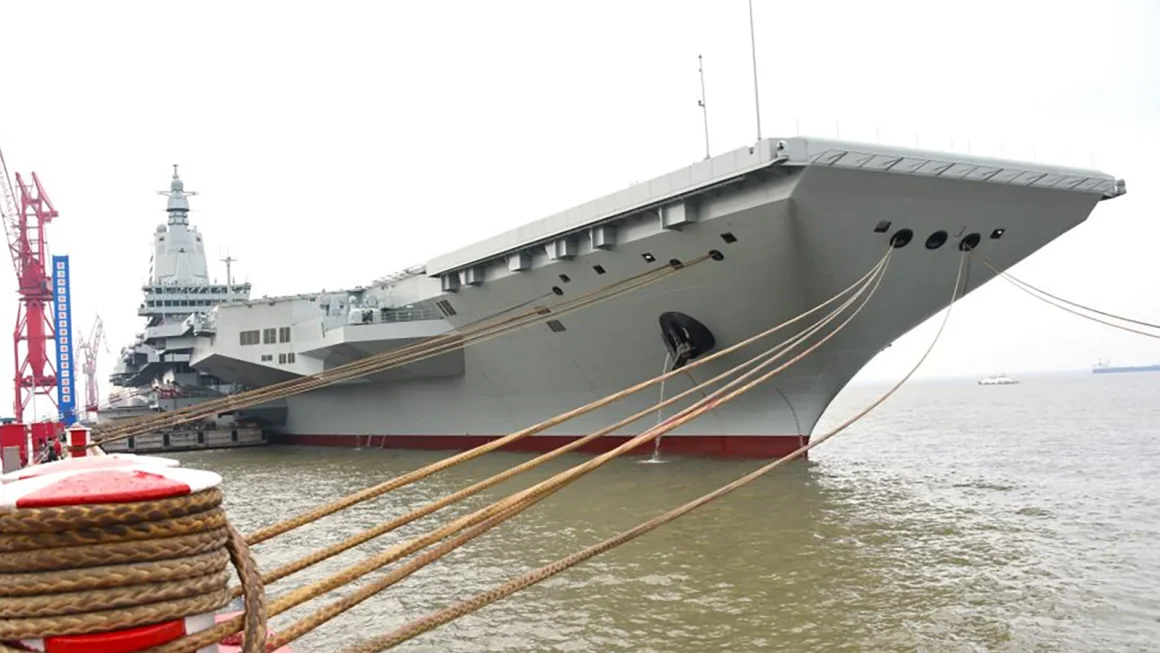
Chinese Aircraft Carrier Fujian Leaves for First Set of Sea Trials
- Air Transport
- Defense and Space
- Business Aviation
- Aircraft & Propulsion
- Connected Aerospace
- Emerging Technologies
- Manufacturing & Supply Chain
- Advanced Air Mobility
- Commercial Space
- Sustainability
- Interiors & Connectivity
- Airports & Networks
- Airlines & Lessors
- Safety, Ops & Regulation
- Maintenance & Training
- Supply Chain
- Workforce & Training
- Sensors & Electronic Warfare
- Missile Defense & Weapons
- Budget, Policy & Operations
- Airports, FBOs & Suppliers
- Flight Deck
- Marketplace
- Advertising
- Marketing Services
- Fleet, Data & APIs
- Research & Consulting
- Network and Route Planning
Market Sector
- AWIN - Premium
- AWIN - Aerospace and Defense
- AWIN - Business Aviation
- AWIN - Commercial Aviation
- Advanced Air Mobility Report - NEW!
- Aerospace Daily & Defense Report
- Aviation Daily
- The Weekly of Business Aviation
- Air Charter Guide
- Aviation Week Marketplace
- Route Exchange
- The Engine Yearbook
- Aircraft Bluebook
- Airportdata.com
- Airport Strategy and Marketing (ASM)
- CAPA – Centre for Aviation
- Fleet Discovery Civil
- Fleet Discovery Military
- Fleet & MRO Forecast
- MRO Prospector
- Air Transport World
- Aviation Week & Space Technology
- Aviation Week & Space Technology - Inside MRO
- Business & Commercial Aviation
- CAPA - Airline Leader
- Routes magazine
- Downloadable Reports
- Recent webinars
- MRO Americas
- MRO Australasia
- MRO Baltics & Eastern Europe Region
- MRO Latin America
- MRO Middle East
- Military Aviation Logistics and Maintenance Symposium (MALMS)
- Asia Aerospace Leadership Forum & MRO Asia-Pacific Awards
- A&D Mergers and Acquisitions
- A&D Programs
- A&D Manufacturing
- A&D Raw Materials
- A&D SupplyChain
- A&D SupplyChain Europe
- Aero-Engines Americas
- Aero-Engines Europe
- Aero-Engines Asia-Pacific
- Digital Transformation Summit
- Engine Leasing Trading & Finance Europe
- Engine Leasing, Trading & Finance Americas
- Routes Americas
- Routes Europe
- Routes World
- CAPA Airline Leader Summit - Airlines in Transition
- CAPA Airline Leader Summit - Americas
- CAPA Airline Leader Summit - Latin America & Caribbean
- CAPA Airline Leader Summit - Australia Pacific
- CAPA Airline Leader Summit - Asia & Sustainability Awards
- CAPA Airline Leader Summit - World & Awards for Excellence
- GAD Americas
- A&D Mergers and Acquisitions Conference (ADMA)
- A&D Manufacturing Conference
- Aerospace Raw Materials & Manufacturers Supply Chain Conference (RMC)
- Aviation Week 20 Twenties
- Aviation Week Laureate Awards
- ATW Airline Awards
- Program Excellence Awards and Banquet
- CAPA Asia Aviation Summit & Awards for Excellence
- Content and Data Team
- Aviation Week & Space Technology 100-Year
- Subscriber Services
- Advertising, Marketing Services & List Rentals
- Content Sales
- PR & Communications
- Content Licensing and Reprints
- AWIN Access
Scramjet-Powered Cruise Missile Emerges As New U.S. Priority
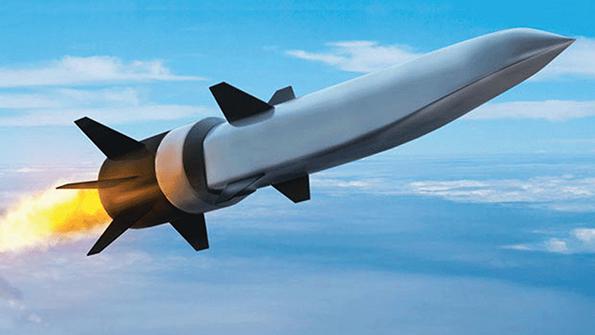
Fielding an operational scramjet-powered cruise missile has emerged as a new priority for the U.S. Defense Department’s proliferating portfolio of maneuvering hypersonic weapons.
Senior defense officials are putting together a program to develop an operational follow-on to DARPA’s Hypersonic Air-breathing Weapon Concept (HAWC), which currently supports competing scramjet-powered missile demonstrators designed by Lockheed Martin/Aerojet Rocketdyne and Raytheon/Northrop Grumman Innovation Systems teams.
- Pentagon officials seek hypersonic air-breathing weapon follow-on
- Awareness of boost-glide challenges sinks in
“We are in the process of trying to figure out what [an operational program] would look like,” says Mike White, assistant director for hypersonics in the office of the under secretary of defense for research and engineering.
As the U.S. military rushed after 2017 to respond to Russian and Chinese hypersonic advances, air-breathing hypersonic cruise missiles fell to the bottom of the priority list. Funding for operational programs favored boost-glide technology over the seemingly less mature field of weapons powered by scramjets (supersonic combustion ramjets).
But that assumption is being challenged. Along with the flight-test experience accumulated a decade ago by the Air Force Research Laboratory’s (AFRL) X-51 scramjet vehicle, recent ground tests and simulations indicate scramjet technology is more advanced than previously understood. In September, the AFRL announced it had achieved thrust levels over 13,000 lb. with a Northrop-designed engine at speeds “above Mach 4” in a hypersonic wind tunnel. In June, Raytheon reported the maturity of its scramjet-powered HAWC demonstrator had exceeded that of its boost-glide design.
In December 2018, Michael Griffin, under secretary of defense for research and engineering, described hypersonic cruise missiles as “further out” than boost-glide weapons. But the technology advanced so quickly that another official, Air Force acquisition chief Will Roper, concluded seven months later the HAWC program would be “a nearer-term not a far-term capability.”
“We’d like to see HAWC transition to a fully operational system,” says Mark Lewis, the Defense Department’s director of research and engineering for modernization. “It’s probably the issue that our hypersonic team is spending most time on right now.”
Awareness is also growing for the technical challenges still facing medium-range boost-glide missiles in the class of DARPA’s Tactical Boost Glide (TBG) missile demonstrators. The Air Force’s 2017 decision to launch the AGM-183A Air-launched Rapid Response Weapon (ARRW), an operational follow-on to the TBG, helped legitimize the Defense Department’s revived interest in hypersonic weapons, White says.
“I think people underestimate the importance of this decision of the Air Force [to launch ARRW] in the hypersonic community,” he says. “We’ve always been kind of stuck in the [research and development] realm. The Air Force in 2017, they were the first service that said: ‘Hey, we want hypersonic weapons.’”
But the TBG-derived ARRW represents a particularly difficult technical challenge. The design uses a higher lift-over-drag ratio wing shape, which has never been successfully tested by the U.S. government. By contrast, the axisymmetric shape of the lower lift-over-drag glider developed for the Common Hypersonic Glide Body (C-HGB)—the front-end designed for the Air Force Hypersonic Conventional Strike Weapon, the Army’s Long-Range Hypersonic Weapon (LRHW) and the Navy’s Intermediate-Range Conventional Prompt Strike (IRCPS)—has logged several successful flight tests since the late 1970s. The winged TBG’s greater maneuverability, albeit with shorter range, makes it far more challenging to design.
“It’s DARPA-hard, and TBG is hard,” Lewis says.
Ongoing studies by the Air Force’s Warfighting Integration Capability are also starting to highlight the operational benefits of cruise missiles compared to medium-range boost-glide systems. A cruise missile still requires a booster rocket to accelerate to hypersonic speed, but it does not need to carry as much oxidizer and fuel as a boost-glide rocket because it remains within the atmosphere. Air-breathing cruise missiles’ smaller size means a single aircraft, such as a Boeing B-52, can carry them in much greater numbers.
“For a hypersonic boost-glide vehicle you can get two, maybe four, on a B-52,” White says. “But you can get 15 or maybe 20 hypersonic cruise missiles [on a B-52] because the size is much smaller.So you can carry them internally in the rotary rack. There are significant advantages for the air breathers, but they offer different technical challenges.”
The smaller size and increased packaging advantages of air breathers would give the Air Force significant tactical advantage, Lewis adds. “The No. 1 question we should be asking is: ‘How do we deliver lots of these things?’ In my mind, one way to do that is to fit a lot of them in a weapons bay. Getting 15-20 per bomb bay is a lot, but if I’m [launching them from] a single mobile launcher, I’m not sure I can deliver the numbers I need. We are not interested in capability when we build two and declare it a success—that doesn’t do anything.”
The Pentagon’s hypersonic weapons portfolio emerged in a blur of bureaucratic activity between 2017 and 2018. The first step was the Air Force’s decision to launch the medium-range ARRW program in 2017 as the follow-on to TBG. Shortly afterward, the Air Force also decided to launch the longer-range HCSW. In November 2017, the Navy conducted a successful test of the proposed C-HGB, which prompted the Navy and the Army to support funding toward the operational prototypes of the IRCPS and LRHW—for submarine and ground launch, respectively.
As it stands now, the portfolio includes air-launched medium-range and long-range boost-glide systems, an intermediate-range submarine-launched missile and a long-range weapon launched from a tractor trailer. If an operational follow-on of the HAWC is approved, with Air Force and Navy concepts under consideration, new air- and surface-launched options for medium-range targets could become available.
In addition to the offensive programs, the Defense Department’s road map also includes development of a counter-hypersonic system—starting with the Missile Defense Agency’s Regional Glide-Phase Weapon System as well as multiple programs for booster development and continued funding of basic science and technology. Additional DARPA programs include the ground-launched Operational Fires, which seeks to integrate a TBG front-end on a two-stage booster stack that includes a throttled upper stage, and the Advanced Full-Range Engine, a dual-mode ramjet that could power a future hypersonic aircraft.
Such a diverse yet overlapping road map has prompted criticism. In July, the chairman of the House appropriations subcommittee on defense, Rep. Peter Visclosky (D-Ind.), warned defense officials that they “need to better define the strategy for the investment in these systems.” Visclosky’s committee proposed cutting some funding for the Army’s hypersonic program, but a joint conference committee of Congressional appropriators ultimately restored the funding and added more for other hypersonic programs.
Lewis believes the development of a multitude of hypersonic missile programs is justified.
“Too many people think hypersonics is just one thing,” Lewis says. “They think, for example, [it’s just for the long-range, conventional prompt strike mission]. But no, it’s a range of capabilities.
“Even at the tactical level it’s, for lack of a better phrase, a high-low mix,” Lewis adds. “We should probably have a mix of air breathers and boost-glide systems. They probably have different capabilities, different ranges and so on. We have F-16s and F-15s, and they have different roles, and that should be the same with tactical hypersonic systems as well.”

Steve covers military aviation, missiles and space for the Aviation Week Network, based in Washington DC.

Guy is a Senior Editor for Aviation Week, covering technology and propulsion. He is based in Colorado Springs.
Related Content

Stay Connected. Stay Informed Grow Your Business.

USMC Discusses Land-Based Tomahawk Missile Launchers
The u.s. army and u.s. marine corps (usmc) are moving closer to fielding land-based tomahawk cruise missiles launched from tractor-trailers. the u.s. navy awarded a $217 million contract on may 24, 2022 for 154 tomahawk block v cruise missiles with 70 missiles going to the u.s. navy, 54 going to the usmc, and 30 to the army. the army and usmc will have their missiles fired from trailers whereas the navy will have them fired from their mark 41 vls cells. naval news inquired the u.s. marines for more information..
Peter Ong 09 Jun 2022
Kelly Flynn, Public Affairs Specialist, U.S. Marine Corps Systems Command replied to Naval News’ inquiry at the end of May 2022 as to what kind of launcher the Marines will use for Tomahawk missiles on their trailers.
“The Marine Corps is using a derivative of the MK41 launcher. For security reasons, that information [the number of missiles per trailer] cannot be disclosed at this time.” Kelly Flynn, Public Affairs Specialist, Marine Corps Systems Command
Asked on if the Mark 41 Vertical Launch System (VLS) cells on the trailers will fire anything else besides the Tomahawk Block V cruise missiles, Flynn replied, “The Marine Corps’ Long Range Fires program is only integrating the Tomahawk weapon system at this time.” Naval News has covered the Marine Corps’ quest in pursuing Land-based Tomahawk cruise missiles here .

At that time on June 21, 2021, the Marines requested 48+ Tomahawk missiles as part of their “Unfunded Priority List.” The Marines were actually budgeted 54 Tomahawk Block Vs in May 2022, six more missiles than they desired.
Naval News Comments

The USMC did not have any photos to share of their trailer launcher although photos do exist online showing a potential working Mark 41 VLS trailer cell prototype. Thus, the number of Tactical Land-Attack Missile (TLAM) Block V Tomahawks will most likely be four missiles per trailer.
The U.S. Army’s Rapid Capabilities and Critical Technologies Office (RCCTO) has a graphic slide showing the intended setup of the TLAMs on a trailer (see top photo) and this seems to coincide with a Naval News image showing a very similar setup (see photo below). The trailer changes to have three axles instead of two, most likely a 34-ton M872 trailer.
Although the RCCTO graphic is an U.S. Army setup, the graphic shows a firing battery of four trailers with four Mark 41 VLS launch cells on each trailer for a total of 16 Tomahawk TLAM missiles per battery. There is the Battery Operations Center (BOC) trailer with electronics, Command staff, communications and firing controls, a BOC Support Vehicle (most likely a HMMWV towing a power generator), a reload flatbed trailer with eight Tomahawk missile containers, and the associated Prime Mover tractors.
For the USMC, the Prime Mover will most likely be the Logistics Vehicle System Replacement (LVSR) tractor whereas the U.S. Army will use the M983A4 Heavy Expanded Mobility Tactical Truck (HEMTT) as the Prime Mover.

For speculative discussion purposes , if the Mark 41 VLS cells can be transported on land, does that mean that the entire Mark 41 VLS missile inventory can also be fired from land? Such a missile inventory includes the Standard family of missiles, the Evolved Sea Sparrow Missile (ESSM) the Anti-Submarine Rocket (ASROC), and in the future, the Long-Range Anti-Ship Missile (LRASM) that might get a VLS booster. If so, the ESSM and Standard can provide the USMC a Surface-to-Air and Surface-to-Surface striking capability at much higher speeds besides just using subsonic Tomahawk, providing Surface Strike and Anti-Air capabilities packed into one trailer (four ESSMs can fit into one Mark 41 VLS cell in a Mark 25 Quad-Pack).
The U.S. Army seems to be fielding the SM-6 Standard missile family, which may include some form of Ballistic Missile Defense (BMD) if networked with the proper “Sensor-to-shooter Kill Chain Web.”
The Mark 41 trailers with the missile canisters and launchers are transportable via C-130 “Hercules” cargo plane whereas the entire setup of the Mark 41 tractor-trailer can be transported by the future Light Amphibious Warship (LAW) if so desired.
The concept of firing Tomahawk cruise missiles from land-based trailers has taken several years to come into funding, acquisition, and fruition. Nonetheless, deals and treaties with allied hosting nations for setting up and firing these U.S. Army and USMC Mark 41 trailer missiles still need to be sorted out and signed into the agreement.

Related Articles
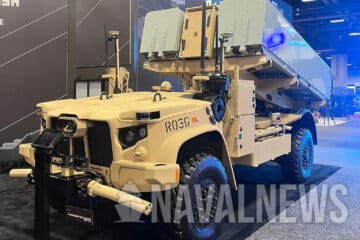
Oshkosh Awarded $40M ROGUE-Fires Order
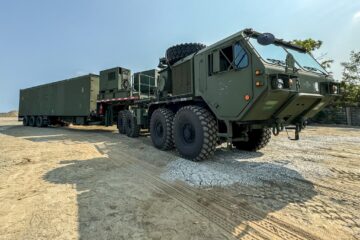
U.S. Army Deploys New Missile Launcher to the Philippines
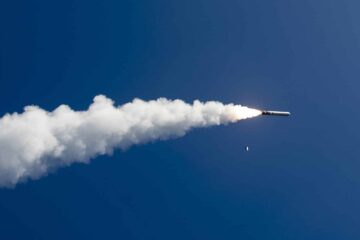
U.S. Navy Trains JMSDF Sailors on Tomahawk Cruise Missile
Switch language:

Tomahawk Long-Range Cruise Missile
Tomahawk is a long-range, all-weather, subsonic cruise missile in service with the surface ships and submarines of the US and the UK’s Royal Navy.
Long-range subsonic cruise missile
Manufacturer
US Navy and Royal Navy
Williams International F415 cruise turbo-fan
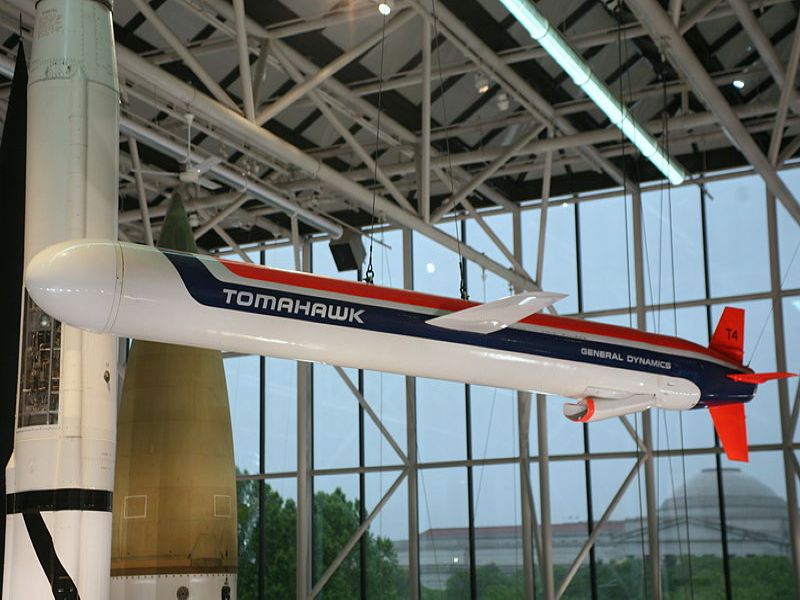
Tomahawk is a long-range, all-weather, subsonic cruise missile in service with the surface ships and submarines of the US and the UK’s Royal Navy. Originally produced by General Dynamics, Tomahawk is currently manufactured by Raytheon.
The Tomahawk Land Attack Missile (TLAM) can strike high-value or heavily defended land targets. The Block II TLAM-A missile achieved initial operating capability in 1984. The missile was first deployed in combat during Operation Desert Storm in 1991.
Recommended White Papers
Key Radio Parameters for Spectrum Monitoring Receivers
Angle of arrival/direction-finding techniques, recommended buyers guides.
Military messaging and naval communications software providers for the naval defence industry
Maritime solutions: subsystems for the naval industry, tomahawk missile variants.
The Tomahawk family of missiles includes a number of variants, carrying different warheads. The UGM-109A Tomahawk (Block II TLAM-A) carries a W80 nuclear warhead.
RGM / UGM-109C (Block III TLAM-C) is a conventional unitary variant, carrying a 1,000lb-class warhead. RGM / UGM-109D (Block III TLAM-D) is a submunitions dispenser variant armed with 166 combined-effects bomblets.
RGM / UGM-109E Tomahawk (Block IV TLAM-E) is the latest member in the Tomahawk missile family. It carries a 1,000lb-class unitary warhead for a maximum range of 900nmi.
The Tomahawk Block IV missiles were converted and upgraded to Block V in 2017. The upgraded Tomahawk includes extended range, enhanced navigation and communication systems and modernised data-link radio.
The upgrades were performed at Raytheon’s Tucson, Arizona facility. The US Navy will use the upgraded Tomahawk cruise missiles beyond 2040. Raytheon was contracted to integrate the upgraded navigation and communication systems into the Block IV Tactical Tomahawk (TACTOM) missile in March 2020. The upgraded version is known as the Block V TACTOM.
The Block Va variants will be named Maritime Strike and have the capability of hitting a moving target. The Block Vb will feature the Joint Multi-Effects Warhead System.
Tomahawk design features
The Tomahawk is designed to operate at very low altitudes while maintaining high-subsonic speeds. Its modular design enables the integration of numerous types of warheads, guidance and control systems.
The missile carries a nuclear or conventional payload. It can be armed with a nuclear or unitary warhead or a conventional submunitions dispenser with combined-effect bomblets. The missile has a 5.56m length, 51.8cm diameter and a 2.67m wingspan. The weight of the missile is 1,315kg. It has a life span of 30 years.
The Tomahawk weapon system includes the Tomahawk missile, Theatre Mission Planning Centre (TMPC) / Afloat Planning System and the Tomahawk weapon control system (TWCS) for surface vessels or combat control system (CCS) for submarines.
Guidance and control
The Tomahawk Block IV uses GPS navigation and a satellite data-link to continue through a pre-set course. The missile can be reprogrammed in-flight to a new target.
The two-way satellite communications are used to perform post-launch mission changes throughout the flight. The on-board camera provides imagery of the target to the commanders before the strike.
The guidance system is assisted by Terrain Contour Matching (TERCOM). The Digital Scene Matching Area Correlation (DSMAC) system or GPS provide terminal guidance.
The Tactical Tomahawk Weapons Control System (TTWCS) integrated within the ship’s systems computes the path to engage targets. The system enables the planning of new missions on board the launch vessel. TTWCS is also used to communicate with multiple missiles for reassigning the targets and redirecting the missiles in flight.
The Block IV Tomahawk missile is outfitted with advanced electronic support measure (ESM) seeker in Block IV Tomahawk missile. Its joint multi-effects warhead enables the commander to control the blast.
The Tomahawk Block IV missile is powered by a Williams International F415 cruise turbo-fan engine and ARC MK 135 rocket motor. The propulsion provides a subsonic speed of 880km/h.

Tomahawk launch platforms
The missile can be launched from over 140 US Navy ships and submarines and Astute and Trafalgar class submarines of the Royal Navy. All cruisers, destroyers, guided missile and attack submarines in the US Navy are equipped with a Tomahawk weapons system.
US Navy launch platforms were modified to accommodate upgraded Tomahawk missile variants. Four Ohio class nuclear ballistic missile submarines were converted into cruise missile submarines for firing Tomahawk missiles. The Virginia class submarines and the Royal Navy Astute class submarines were also fitted with new vertical launch modules for Tomahawk missile.
Tomahawk orders and deliveries
The US signed a foreign military sales (FMS) agreement with the UK in 1995 to supply 65 Tomahawks for use with the Royal Navy nuclear submarines. The first batch of missiles was delivered in 1998.
The US Government approved an agreement in 2003 to deliver 65 Tomahawk Block IV missiles for the UK. In August 2004, the US Navy placed a $1.6bn multi-year procurement contract with Raytheon for 2,200 Tomahawk Block IV missiles.
Raytheon was awarded a $346m production contract for 473 Tomahawk Block IV cruise missiles in March 2006. The contract includes 65 submarine torpedo tube-launched missiles for the Royal Navy. The Block IV entered service with the Royal Navy in March 2008.
Raytheon was awarded a $207m-worth firm-fixed-price contract in March 2009 for 207 Tomahawk Block IV All-Up-Round (AUR) missiles.
The 2,000th Tomahawk Block IV missile was delivered to the US Navy in February 2010.
The US Navy placed a $338m contract with Raytheon in June 2012 for the delivery of 361 Tomahawk Block IV tactical cruise missiles. Another contract worth $254.6m was awarded for Tomahawk Block IV in the same year.
Raytheon delivered the 3,000th Tomahawk Block IV to the US Navy in January 2014 as part of the ninth Block IV production contract.
The US Navy awarded a $251m contract to Raytheon for the production and delivery of Tomahawk Block IV missiles for both the US Navy and Royal Navy in September 2014.
A $25.9m contract for Tomahawk missile composite capsule launching systems (C/CLS) was awarded in December 2014. The C/CLS is integrated with the nuclear-powered fast-attack submarines and nuclear-powered guided-missile submarines, allowing the missile to be launched from submarines.
Tomahawk Block IV missile demonstrated its moving target capability in tests conducted in February 2015.
Raytheon received a $122m contract from the US Navy in March 2015 for the production of 114 Tomahawk Block IV all-up round missiles. Raytheon conducted an active seeker test flight for the Tomahawk Block IV cruise missile in January 2016.
The 4,000th Tomahawk Block IV missile was delivered to the US Navy in August 2017. The US Navy warships and submarines launched 66 GPS-enabled Tomahawk missiles at Syrian chemical weapon facilities in 2018.
Raytheon planned to undertake recertification and modernisation programmes for Tomahawk Block IV missile in 2019 to add maritime strike capability and multiple-effects warhead upgrades to the missiles.
Raytheon received a $349m contract for phase two of the Maritime Strike Tomahawk Rapid Deployment Capability to improve the Tomahawk cruise missile system in August 2019. Work will be executed in various locations across the US until February 2023.
Related Projects
More Projects
Transwing Vertical Take-Off and Landing (VTOL) UAS, US
Combat boat 90 (cb90), sweden, naval station mayport, jacksonville, florida, kings bay naval submarine base, sign up for our daily news round-up.
Give your business an edge with our leading industry insights.
Sign up to the newsletter
Your corporate email address.
Naval Technology In Brief
Global Defence Technology
Thematic Take
I consent to Verdict Media Limited collecting my details provided via this form in accordance with Privacy Policy
Thank you for subscribing
View all newsletters from across the GlobalData Media network.
Long Range Anti-Ship Missile (LRASM)

Long Range Anti-Ship Missile
Lrasm: long-range anti-surface cruise missile..
Our warfighters must be able to deter and defend, which is the core focus of LRASM. In order to penetrate today’s sophisticated integrated air defense environments anti-ship missiles must be able to employ considerable precision routing, guidance and stealth, day or night and in all weather conditions. Derived from the combat-proven Joint Air-to-Surface Standoff Missile (JASSM), LRASM is a precision-guided intelligent anti-ship missile design to interdict a variety of surface threats at very long range, navigating semi-autonomously to the target, and delivering a precise payload from safe, standoff range.
Multi-platform, multi-role, multi-mission.
Lockheed Martin is currently executing the Accelerated Acquisition contract for the LRASM Deployment Office, further maturing technologies delivered as an early operational capability for the U.S. Air Force B-1B and U.S. Navy F/A-18E/F.
We are also investing in a surface-launch variant to be used by the VLS, currently in the fleet.
LRASM brings additional, advanced long-range sea and land strike capabilities to the 5th Generation F-35 fleet, with initial fit checks completed and ongoing integration efforts.
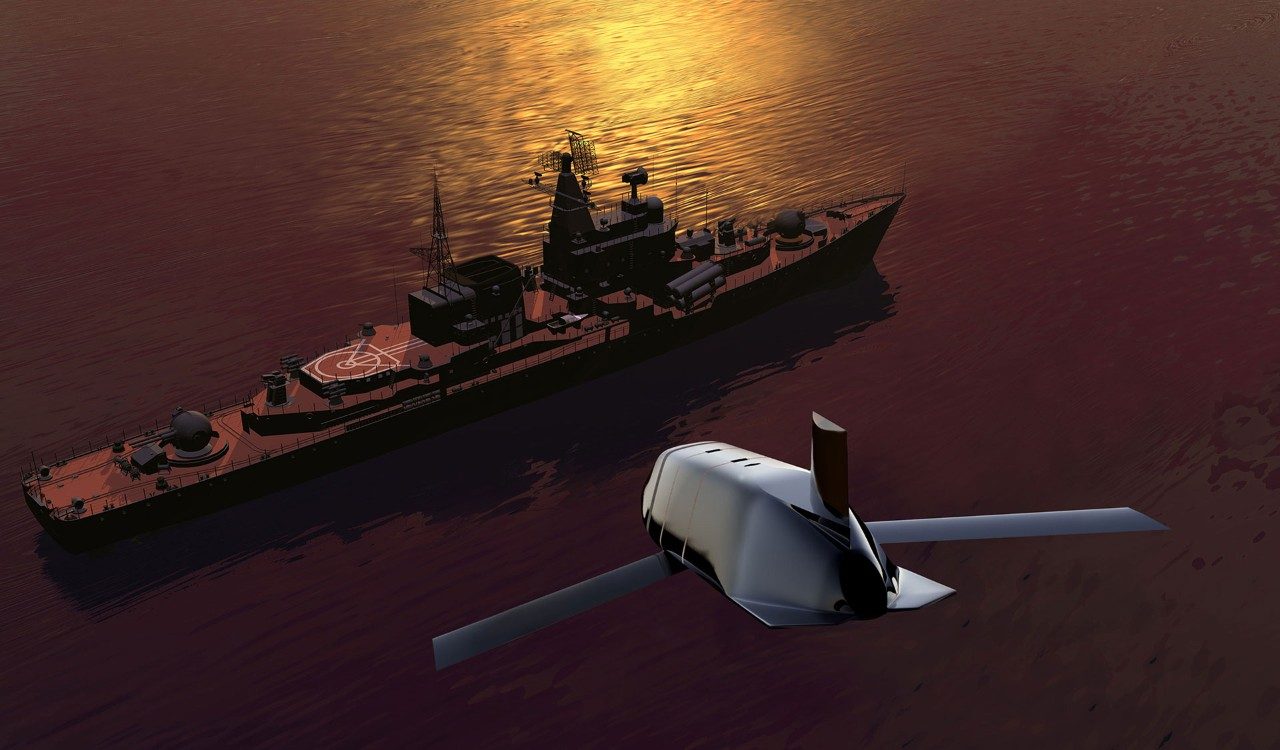
LRASM technology will reduce dependence on ISR platforms, network links, and GPS navigation in aggressive electronic warfare environments. This advanced guidance operation means the weapon can use gross target cueing data to find and destroy its pre-defined target in denied environments. Precision lethality against surface and land targets ensures the system will become an important addition to the US Navy warfighter’s arsenal. LRASM provides range, survivability, and lethality that no other current system provides.
LRASM Air Launched Flight Testing
LRASM successfully completed B-1B integration and flight testing, leading the way to an early operational capability (EOC) declaration by the U.S. Air Force in December 2018. The program now marches on with F/A-18E/F flight testing leading to an EOC milestone in 2019.
LRASM Boost Test Vehicle flight from Mk 41 Vertical Launch System
The successful LRASM Boosted Test Vehicle (BTV) flight on 4 Sep '13 at WSMR Desert Ship Range, demonstrated a LRASM launch from a MK 41 VLS canister using the proven Mk-114 booster. Lockheed Martin is investing in the surface-launch LRASM effort to reduce program risk and accelerate time to fielding an OASuW capability on US Navy surface combatants. LRASM can be employed from DDGs and CGs with only software modifications to existing launch control systems. LRASM is the low-risk and low-cost solution for our naval warfighter.
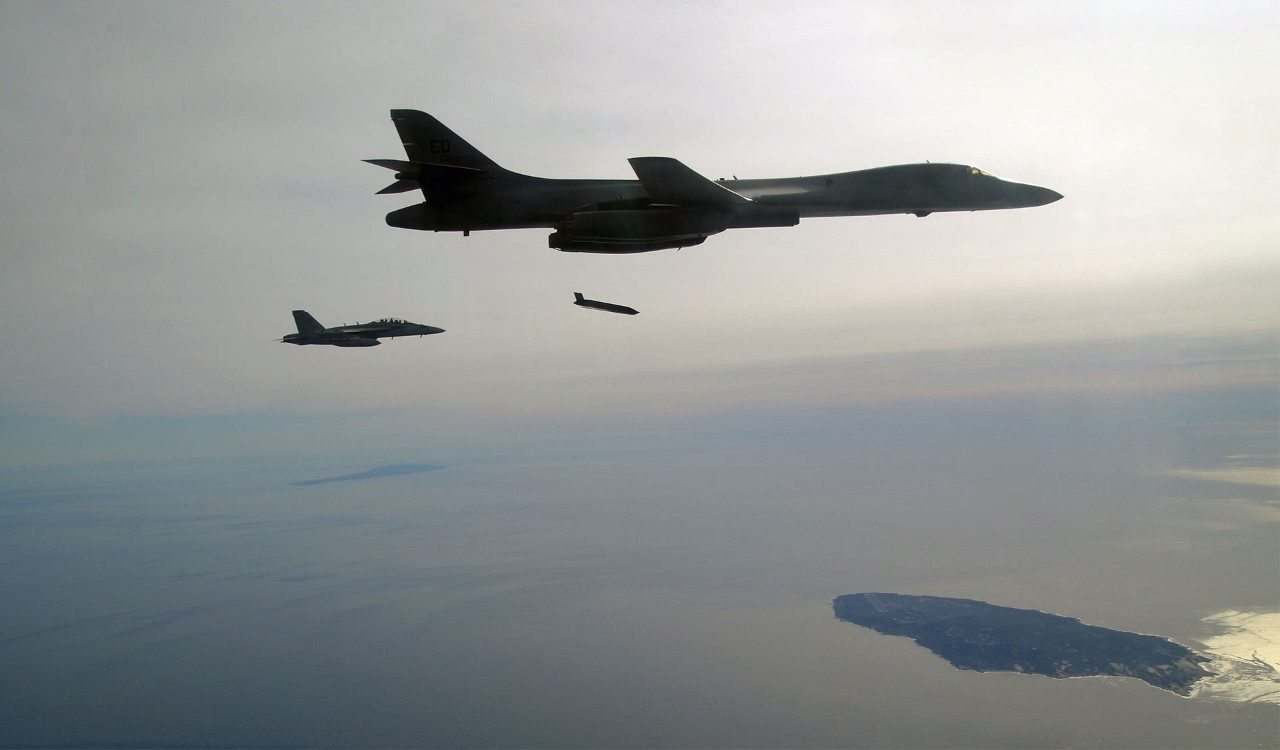
Stay Informed: The Latest News on LRASM
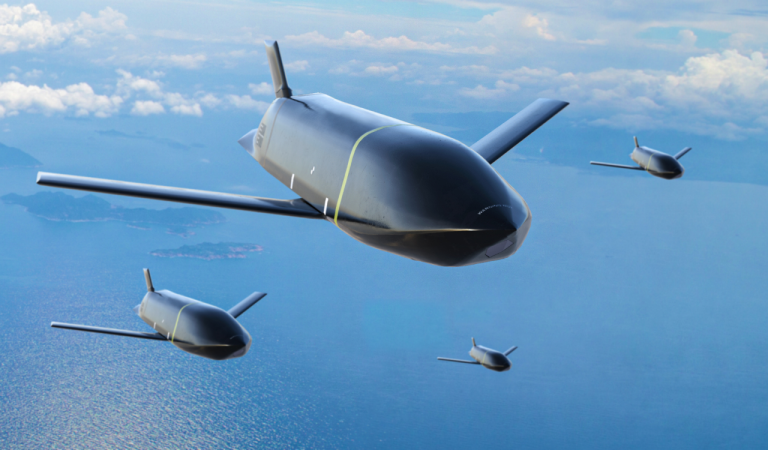
- News Releases
- Product Card
U.S. Navy / Domestic
Dom DeScisciolo (407) 356-3376
FMS / International Business Development
Ben Strickland (407) 356-3726 Lawrence Pravecek (703) 413-2653
Media Relations (407) 760-4610
A New Pacific Arsenal to Counter China
With missiles, submarines and alliances, the Biden administration has built a presence in the region to rein in Beijing’s expansionist goals.
By John Ismay , Edward Wong and Pablo Robles April 26, 2024
U.S. officials have long seen their country as a Pacific power, with troops and arsenals at a handful of bases in the region since just after World War II.
U.S. military or partner bases
But the Biden administration says that is no longer good enough to foil what it sees as the greatest threat to the democratic island of Taiwan — a Chinese invasion that could succeed within days.
The United States is sending the most advanced Tomahawk cruise missiles to Japan and has established a new kind of Marine Corps regiment on Okinawa that is designed to fight from small islands and destroy ships at sea.
The Pentagon has gained access to multiple airfields and naval bases in the Philippines , lessening the need for aircraft carriers that could be targeted by China’s long-range missiles and submarines in a time of war.
The Australian government hosts U.S. Marines in the north of the country, and one of three sites in the east will soon be the new home for advanced American-made attack submarines. The United States also has a new security agreement with Papua New Guinea.
Potential submarine bases
Xi Jinping, China’s leader, and other officials in Beijing have watched the U.S. moves with alarm. They call it an encirclement of their nation and say the United States is trying to constrain its main economic and military rival.
Since the start of his administration, President Biden has undertaken a strategy to expand American military access to bases in allied nations across the Asia-Pacific region and to deploy a range of new weapons systems there. He has also said the U.S. military would defend Taiwan against a Chinese invasion.
On Wednesday, Mr. Biden signed a $95 billion supplemental military aid and spending bill that Congress had just passed and that includes $8.1 billion to counter China in the region. And Secretary of State Antony J. Blinken traveled to Shanghai and Beijing this week for meetings with Mr. Xi and other officials in which he raised China’s military activity in the Taiwan Strait and the South China Sea, calling it “destabilizing.”
Mr. Xi told Mr. Blinken on Friday that the United States should not play a “zero-sum game” or “create small blocs.” He said that “while each side can have its friends and partners, it should not target, oppose or harm the other,” according to an official Chinese summary of the meeting.
Earlier in April, the leaders of the Philippines and Japan met with Mr. Biden at the White House for the first such summit among the three countries. They announced enhanced defense cooperation, including naval training and exercises, planned jointly and with other partners. Last year, the Biden administration forged a new three-way defense pact with Japan and South Korea.

President Biden held a trilateral meeting earlier this month with the leaders of Japan and the Philippines at the White House.
Yuri Gripas for The New York Times
“In 2023, we drove the most transformative year for U.S. force posture in the Indo-Pacific region in a generation,” Ely S. Ratner, the assistant secretary of defense for Indo-Pacific security affairs, said in a statement following an interview.
The main change, he said, is having American forces distributed in smaller, more mobile units across a wide arc of the region rather than being concentrated at large bases in northeast Asia. That is largely intended to counter China’s efforts to build up forces that can target aircraft carriers or U.S. military outposts on Okinawa or Guam.
These land forces, including a retrained and refitted U.S. Marine littoral regiment in Okinawa, will now have the ability to attack warships at sea.
For the first time, Japan’s military will receive up to 400 of their own Tomahawk cruise missiles — the newest versions of which can attack ships at sea as well as targets on land from over 1,150 miles away.
The Pentagon has also gained access rights for its troops at four additional bases in the Philippines that could eventually host U.S. warplanes and advanced mobile missile launchers, if Washington and Manila agree that offensive weaponry can be placed there.
The United States has bilateral mutual defense agreements with several allied nations in the region so that an attack on the assets of one nation could trigger a response from the other. Bolstering the U.S. troop presence on the soil of allied countries strengthens that notion of mutual defense.
In addition, the United States continues to send weapons and Green Beret trainers to Taiwan, a de facto independent island and the biggest flashpoint between the United States and China. Mr. Xi has said his nation must eventually take control of Taiwan, by force if necessary.
“We’ve deepened our alliances and partnerships abroad in ways that would have been unthinkable just a few years ago,” Kurt Campbell, the new deputy secretary of state, told reporters last year, when he was the top Asia policy official in the White House.
What Deters China?
Taiwan’s foreign minister, Joseph Wu, said in an interview in Taipei that the strengthened alliances and evolving military force postures were critical to deterring China.
“We are very happy to see that many countries in this region are coming to the realization that they also have to be prepared for further expansions of the P.R.C.,” he said, referring to the People’s Republic of China.
To some Chinese military strategists, the U.S. efforts are aimed at keeping China’s naval forces behind the “first island chain” — islands close to mainland Asia that run from Okinawa in Japan to Taiwan to the Philippines.
U.S. military assets along these islands could prevent Chinese warships from getting into the open Pacific waters farther east if conflict were to break out.
Leaders in China’s People’s Liberation Army also talk of establishing military dominance of the “second island chain” — which is farther out in the Pacific and includes Guam, Palau and West Papua.
First Island Chain
Second Island Chain
philippines
But several conservative critics of the administration’s policies argue that the United States should be keeping major arms for its own use and that it is not producing new ships and weapons systems quickly enough to deter China, which is rapidly growing its military .
Some American commanders acknowledge the United States needs to speed up ship production but say the Pentagon’s warfighting abilities in the region still outmatch China’s — and can improve quickly with the right political and budget commitments in Washington.
“We have actually grown our combat capability here in the Pacific over the last years,” Adm. Samuel J. Paparo Jr. said in an interview before becoming the head of the U.S. Indo-Pacific Command on May 3. “But our trajectory is still not a trajectory that matches our adversary. Our adversaries are building more capability and they’re building more warships — per year — than we are.”
Mr. Paparo said new American warships were still more capable than the ones China is building, and the U.S. military’s “total weight of fires” continued to outmatch that of the People’s Liberation Army, for now.

Warplanes on the flight deck of U.S.S. Carl Vinson, an aircraft carrier, during a joint U.S. and Japanese military exercise in the Philippine Sea in January.
Richard A. Brooks/Agence France-Presse — Getty Images
The Intermediate-Range Nuclear Forces Treaty , a Cold War-era arms control agreement between Washington and Moscow, prohibited land-based cruise or ballistic missiles with ranges between 311 miles and 3,420 miles. But after the Trump administration withdrew from the pact, the United States was able to develop and field a large number of small, mobile launchers for previously banned missiles around Asia.
Even with the deployment of new systems, the United States would still rely on its legacy assets in the region in the event of war: its bases in Guam, Japan and South Korea, and the troops and arms there.
All of the senior U.S. officials interviewed for this story say war with China is neither desirable nor inevitable — a view expressed publicly by Defense Secretary Lloyd J. Austin III. But they also insist that a military buildup and bolstering alliances, along with diplomatic talks with China, are important elements of deterring potential future aggression by Beijing.
Wang Yi, China’s foreign minister, told Mr. Blinken on Friday in Beijing that “the negative factors in the relationship are still increasing and building, and the relationship is facing all kinds of disruptions.” He warned the United States “not to interfere in China’s internal affairs, not to hold China’s development back, and not to step on China’s red lines and on China’s sovereignty, security and development interests.”
U.S. military or
partner bases
The new deterrent effort is twofold for American forces: increasing patrolling activities at sea and the capabilities of its troop levels ashore.
To the former, the Pentagon has announced that U.S. Navy warships will participate in more drills with their Japanese counterparts in the western Ryukyu Islands near Taiwan and with Filipino ships in the South China Sea, where the Chinese coast guard has harassed ships and installations controlled by the Philippines .

A swarm of Chinese militia and Coast Guard vessels chased a Philippine Coast Guard ship in the South China Sea last year.
Jes Aznar for The New York Times
To the latter, Marine Corps and Army units already in the Pacific have recently fielded medium- and long-range missiles mated to small, mobile trucks that would have been prohibited under the former treaty.
These trucks can be quickly lifted by Osprey tilt-rotor aircraft or larger cargo planes to new locations, or they can simply drive away to evade a Chinese counterattack. A new flotilla of U.S. Army watercraft being sent to the region could also be used to reposition troops and launchers from island to island.
In an interview last year with The New York Times, Gen. David H. Berger, then the Marine Corps’ top general, said the service had begun analyzing strategic choke points between islands where Chinese forces were likely to transit throughout the Pacific. He said the service had identified sites where Marine assault forces like the new Okinawa-based littoral regiment could launch attacks on Beijing’s warships using these new weapons.
Philippines
Partner bases
The Pentagon announced in February last year a new military base-sharing agreement with Manila, giving U.S. forces access to four sites in the Philippines for use in humanitarian missions, adding to the five sites previously opened to the Pentagon in 2014. Most of them are air bases with runways long enough to host heavy cargo planes.
Plotting their locations on a map shows the sites’ strategic value should the United States be called upon to defend their oldest treaty ally in the region , if the Philippines eventually agrees to allow the U.S. military to put combat troops and mobile missile systems there.
One, on the northern tip of Luzon Island, would give missile-launching trucks the ability to attack Chinese ships across the strait separating Philippines from Taiwan, while another site about 700 miles to the southwest would allow the U.S. to strike bases that China has built in the Spratly Islands nearby.
In 2023, the United States committed $100 million for “infrastructure investments” at the nine bases, with more funds expected this year.
The Pentagon has forged closer military ties with Australia and Papua New Guinea , extending America’s bulwark against potential attempts by the Chinese military at establishing dominance along the “second island chain.”
The Obama administration moved a number of littoral combat ships to Singapore and deployed a rotating force of Marines to Darwin, on Australia’s north coast, giving the Pentagon more assets that could respond as needed in the region.
Last year, the Biden administration greatly elevated its commitment to Australia, which is one of America’s most important non-NATO allies.

The U.S.S. North Carolina, a Virginia-class submarine, docking in Perth, Australia, last year.
Tony Mcdonough/Agence France-Presse — Getty Images
A new multibillion dollar agreement called AUKUS — for Australia, the United Kingdom and the United States — will permanently transfer some of the U.S. Navy’s newest Virginia-class attack subs to Canberra . The location of the new bases for those subs has not been announced, but the first group of Australian sailors who will crew them graduated from nuclear power training in America in January.
These stealthy submarines, which can fire torpedoes and Tomahawk missiles, will potentially add to the number of threats Beijing faces in case of a regional war.
Just north of Australia, an agreement in August gave U.S. forces more access to Papua New Guinea for humanitarian missions and committed American tax dollars to update military facilities there.
To Admiral Paparo, this growing network of partnerships and security agreements across thousands of miles of the Pacific is a direct result of what he calls China’s “revanchist, revisionist and expansionist agenda” in the region that has directly threatened its neighbors.
“I do believe that the U.S. and our allies and partners are playing a stronger hand and that we would prevail in any fight that arose in the Western Pacific,” the admiral said.
“It’s a hand that I would not trade with our would-be adversaries, and yet we’re also never satisfied with the strength of that hand and always looking to improve it.”
- Share full article
Advertisement
- Air Warfare
- Cyber (Opens in new window)
- C4ISR (Opens in new window)
- Training & Sim
- Asia Pacific
- Mideast Africa
- The Americas
- Top 100 Companies
- Defense News Weekly
- Money Minute
- Whitepapers & eBooks (Opens in new window)
- DSDs & SMRs (Opens in new window)
- Webcasts (Opens in new window)
- Events (Opens in new window)
- Newsletters (Opens in new window)
- Events Calendar
- Early Bird Brief
- Digital Edition (Opens in new window)
New US nuclear chief takes fresh stance on sea-launched cruise missile
WASHINGTON — The new head of U.S. Strategic Command, which oversees the country’s nuclear arsenal, is taking a less forceful tone on developing the sea-launched cruise missile than his predecessor, who was an unabashed champion of the program.
Gen. Anthony Cotton neither endorsed nor repudiated the sea-launched cruise missile nuclear program, commonly called SLCM-N, in a February letter to Congress. The letter — entered into the congressional record during Cotton’s testimony before the Senate Armed Services Committee last week — and the Biden administration’s proposed nuclear arsenal budget for fiscal 2024 lay the groundwork for another tussle with Congress over whether to proceed with SLCM-N.
“A low-yield, non-ballistic nuclear capability to deter, assure and respond without visible generation (similar to the characteristics of SLCM-N) offers additional options and supports an integrated deterrence approach,” Cotton wrote. “It is one of several possible nuclear or conventional capabilities the U.S. could develop to enhance strategic deterrence.
“I support funding to address the full range of possible options to address this challenge in a rapidly changing security environment with the backdrop of multiple adversaries.”
Congress authorized $25 million for continued SLCM-N research and development when it passed the FY23 National Defense Authorization Act in December. By contrast, the Biden administration’s FY24 budget request for the National Nuclear Security Administration does not include SLCM-N funding.
Proponents of SLCM-N in Congress heavily relied on Cotton’s predecessor, Adm. Charles Richard, to argue in favor of what they view as gaps in the United States’ low-yield, unobservable nuclear capabilities. In his own letter to Congress in June, Richard wrote that he supports SLCM-N despite the Biden administration’s attempts to cancel it , citing “the current situation in Ukraine and China’s nuclear trajectory.”
Richard retired when Cotton assumed leadership of Strategic Command in December.
“Cotton, who’s taking a more measured approach, is still open to it, but he’s not the adamant supporter that Richard was at all,” said Stephen Young, who lobbies for the Union of Concerned Scientists, a nuclear nonproliferation advocacy group. “He’s not wedded to that as the only possible way to fill that gap.”
Young noted that the W76-2 warhead equipped on submarine-launched ballistic missiles already provides the U.S. with a low-yield, unobservable capability — even if the country doesn’t have cruise missiles with those specific functions. Additionally, he argued that the U.S. is building the low-yield B61-12 gravity bomb that can launch from the new B-21 stealth bomber as a non-ballistic nuclear option.
“To me it’s a huge stretch to have to have all these things,” said Young, arguing that SLCM-N is “a nuclear warfighting tool that we don’t need” to achieve deterrence.
The proposed FY24 nuclear weapons budget also includes funding to maintain the B83 megaton gravity bomb , which is 80 to 100 times more powerful than the bomb dropped on Hiroshima, Japan, during World War II. The Biden administration wants to retire the B83, per its Nuclear Posture Review, but has yet to lay out a time frame to do so.
In the meantime, Congress used the FY23 defense authorization bill to prevent its retirement until the Pentagon identifies a replacement capability to strike hard and deeply buried targets.
“We are going to have to figure out how we are going to continue [with] what capabilities we have to go after [hard and deeply buried targets], whether conventional or nuclear,” Cotton told the Senate Armed Services Committee last week.
But Young argued that “there are very few scenarios where” the U.S. would want to strike hard and deeply buried targets using the B83 given the immense level of destruction that would ensue.
“If you want to hit the various facilities in North Korea and drop the larger bomb, you’ve got fallout — all of South Korea and Japan,” Young said.
Bryant Harris is the Congress reporter for Defense News. He has covered U.S. foreign policy, national security, international affairs and politics in Washington since 2014. He has also written for Foreign Policy, Al-Monitor, Al Jazeera English and IPS News.
More In Budget
NATO drone surveillance hours surge amid growing appetite for intel
“the north atlantic security environment is under threat,” said scott bray, the assistant secretary general for intelligence and security..
Pentagon innovation chief calls for bigger, faster Replicator 2.0
Defense innovation unit head doug beck outlined his goals for the next version of the drone program, even while the first is a work in progress..
Stingy intel-sharing a ‘recipe for losing,’ Space Force’s Miller says
"the united states does not go into conflict alone," lt. gen. david miller said at the geoint conference. "check your history. it does not happen.".
Teledyne unveils Rogue 1 exploding drone sought by Marine Corps
Should the rogue 1 drone not explode or be recalled, it can be disarmed and reused thanks to a mechanical disconnect..
National Geospatial-Intelligence Agency creating space intel hub
While the joint mission management center is still in the concept phase, nga is working quickly to get it up and running., featured video, with insurgents pouring over a wall in afghanistan, this sgt. took them on with only his pistol.
New thermal optics and more at Modern Day Marine 2024 | Defense News Weekly Full Episode 5.4.24
How can I start prepping for upcoming school year expenses? — Money Minute
Thermal / red dot combo on display at Modern Day Marine
Trending now, how dc became obsessed with a potential 2027 chinese invasion of taiwan, sweden goes back to the drawing board for a next-gen warplane, one defense strategy, two drastically different budgets, missile mishaps, ammo snags – report details danish frigate deployment, electronic warfare in ukraine has lessons for us weapons, navigation.
- Election 2024
- Entertainment
- Newsletters
- Photography
- Personal Finance
- AP Investigations
- AP Buyline Personal Finance
- AP Buyline Shopping
- Press Releases
- Israel-Hamas War
- Russia-Ukraine War
- Global elections
- Asia Pacific
- Latin America
- Middle East
- Election Results
- Delegate Tracker
- AP & Elections
- Auto Racing
- 2024 Paris Olympic Games
- Movie reviews
- Book reviews
- Personal finance
- Financial Markets
- Business Highlights
- Financial wellness
- Artificial Intelligence
- Social Media
Russia hits Ukraine’s power grid with a ‘massive’ attack on a day marking the WWII defeat of Nazism
At least two people were injured and 13 residential buildings damaged as a result of Russian attacks overnight in Kyiv region.
In this photo provided by the Ukrainian Emergency Service, rescuers work at a damaged building after a Russian missile attack in Kyiv region, Ukraine, Wednesday, May 8, 2024. (Ukrainian Emergency Service via AP Photo)
- Copy Link copied
Police experts inspect the site of a Russian missile attack, in Zaporizhzhia, Ukraine, Wednesday, May 8, 2024. (AP Photo/Andriy Andriyenko)
A man looks at the debris of a car following a Russian missile attack in Zaporizhzhia, Ukraine, Wednesday, May 8, 2024. (AP Photo/Andriy Andriyenko)
Ukrainian servicemen turn over a damaged car at the scene of a Russian missile attack in Zaporizhzhia, Ukraine, Wednesday, May 8, 2024. (AP Photo/Andriy Andriyenko)
Flames burn in a crater following a Russian missile attack in Zaporizhzhia, Ukraine, Wednesday, May 8, 2024. (AP Photo/Andriy Andriyenko)
A woman walks in front of a crater caused by a Russian missile attack in Zaporizhzhia, Ukraine, Wednesday, May 8, 2024. (AP Photo/Andriy Andriyenko)
Police officers inspect a crater after a Russian missile attack in Zaporizhzhia, Ukraine, Wednesday, May 8, 2024. (AP Photo/Andriy Andriyenko)
KYIV, Ukraine (AP) — Russian forces unleashed a nighttime barrage of more than 50 cruise missiles and explosive drones at Ukraine’s power grid Wednesday, targeting a wide area in what President Volodymyr Zelenskyy called a “massive” attack on the day the country celebrates the defeat of Nazism in World War II.
The bombardment blasted targets in seven Ukrainian regions, including the Kyiv area and parts of the south and west, damaging homes and the country’s rail network, authorities said. Three people, including an 8-year-old girl, were injured, according to officials.
Russia has repeatedly pounded Ukraine’s energy infrastructure during the war that is stretching into its third year and has claimed thousands of lives. By taking out the power, the Kremlin’s forces aim to rob Ukrainian manufacturing of its energy supply, especially military plants, and crush public morale.
Russian attacks have damaged nearly half of Ukraine’s power infrastructure since the start of the Kremlin’s full-scale invasion in February 2022, officials say. The damage is estimated at $12.5 billion, with $1 billion inflicted during the past two weeks, according to the chairman of the Ukrainian Parliament’s Committee on Energy and Housing Services, Andrii Herus.
The mass barrages also drain Ukrainian air defenses of ammunition as Kyiv’s depleted forces await delivery of the latest batch of promised Western military support . Ukrainian officials have been pleading for more NATO-standard air defense systems, such as Patriots.
Zelenskyy noted that Wednesday’s attacks occurred on the day that Ukraine observes the end of European fighting in World War II and equated Ukraine’s current struggle with that conflict, saying on social platform X that “only a united free world” can stop Russian President Vladimir Putin. Ukraine last year changed the date of the Day of Remembrance and Victory over Nazism to avoid it coinciding with Russia’s own Victory Day commemorations on May 9.
Russia pummeled Ukraine’s energy infrastructure during the “blackout winter” of 2022-23. In March, it launched a new wave of attacks, one of which completely destroyed the Trypilska power plant near Kyiv, one of the country’s biggest.
Russian President Vladimir Putin has framed the attacks as retaliation for Ukrainian long-range strikes on Russian oil refineries. On Wednesday, a Ukrainian attack hit an oil terminal, injuring five workers and starting a fire, Russia-appointed authorities in the partially occupied Luhansk region said.
Russian bombardments, though frequent, have become less regular in recent weeks, and Ukrainian officials suspect Moscow is stockpiling resources ahead of a major battlefield offensive that could come within weeks.
The 1,000-kilometer (600-mile) front line has changed little since the early months of the war, but Russia has recently made small but steady gains in some areas as Ukraine battles with a lack of manpower and a shortage of weapons.
National electrical grid operator Ukrenergo said facilities were hit in the Vinnytsia, Zaporizhzhia, Kirovohrad, Poltava and Ivano-Frankivsk regions.
Two energy facilities were hit in the Lviv region, which is in the country’s far west and distant from the fighting’s front lines, according to regional Gov. Maksym Kozytskyi.
DTEK, Ukraine’s biggest private energy supplier, said the attack “seriously damaged” equipment at three of its thermal power plants.
The attack was the fifth in the last six weeks targeting the company’s facilities, DTEK said. Overall, since the beginning of Russia’s full-scale invasion in February 2022, the company’s assets have come under attack nearly 180 times, injuring 51 workers and killing three, it said.
Russia launched 55 missiles and 21 Shahed drones overnight, the Ukrainian air force said. Air defenses downed 39 of the missiles and 20 of the drones, Ukrainian air force commander Mykola Oleshchuk said.
Russian forces also damaged the railway station building and train tracks in Kherson, national railway operator Ukrzaliznytsia said.
Also Wednesday, five people including three children were injured in an attack that struck an educational facility in northeastern Kharkiv, regional Gov. Oleh Syniehubov said on social media. City Mayor Ihor Terekhov said one of the children was in critical condition.
Follow AP’s coverage of the war in Ukraine at https://apnews.com/hub/russia-ukraine
Iraqi militant group claims missile attack on Tel Aviv targets, source says
- Medium Text
Sign up here.
Reporting by Timour Azhari Editing by Chris Reese and Sandra Maler
Our Standards: The Thomson Reuters Trust Principles. New Tab , opens new tab
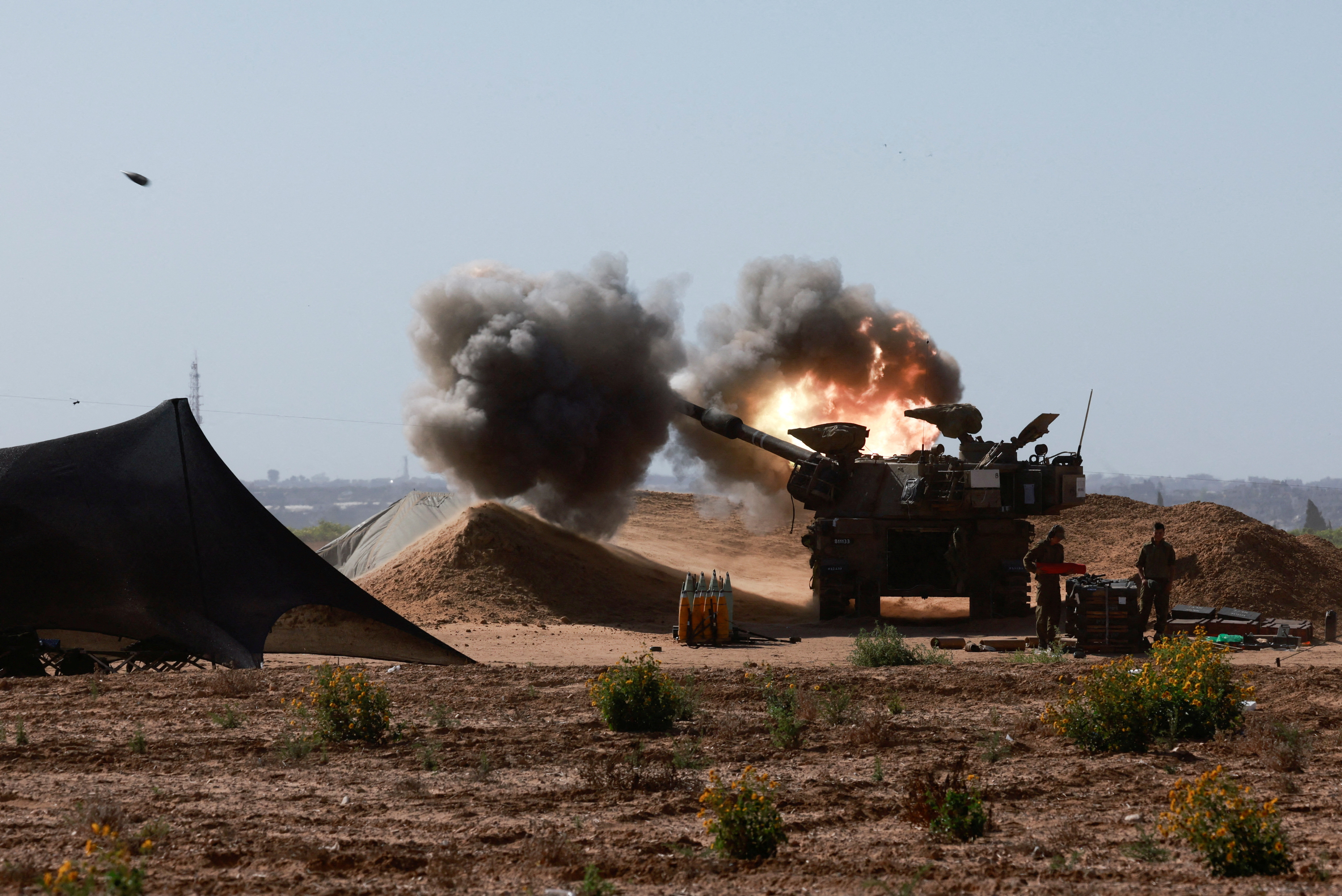
World Chevron

North Macedonia opposition wins big on election night
North Macedonia's right-wing opposition won big in parliamentary and presidential elections on Wednesday, on a night that saw the Balkan country also elect its first female head of state.



IMAGES
VIDEO
COMMENTS
The AGM-158C LRASM (Long Range Anti-Ship Missile) is a stealth air launch anti-ship cruise missile developed for the United States Air Force and United States Navy by the Defense Advanced Research Projects Agency (). Derived from the AGM-158B JASSM-ER, the LRASM was intended to pioneer more sophisticated autonomous targeting capabilities than the U.S. Navy's current Harpoon anti-ship missile ...
WASHINGTON — The Air Force is looking to move ahead with flight testing for its new hypersonic cruise missile in fiscal year 2025, according to a top service official and budget documents. "We ...
The U.S. Air Force secretly test-fired a long-range variant of a stealthy cruise missile from a B-2 stealth bomber late last year, defense contractor Northrop Grumman revealed Thursday. The ...
A U.S. Air Force MC-130J Commando II executes the first-ever European-theater live-fire demonstration of a Joint Air-to-Surface Standoff Missile during exercise Atreus in Norway on Nov. 9, 2022.
The U.S. Air Force has awarded Raytheon a contract to develop the service's next-generation stealth cruise missile. The Long Range Stand Off (LRSO) missile will arm B-21 Raider and B-52 ...
An unarmed AGM-86B air-launched cruise missile is released from a B-52H Stratofortress over the Utah Test and Training Range during a nuclear weapons system evaluation sortie on Sept. 22, 2014.
AGM-158 JASSM. The AGM-158 JASSM ( Joint Air-to-Surface Standoff Missile) is a low detection standoff air-launched cruise missile developed by Lockheed Martin for the United States Armed Forces. [4] It is a large, stealthy long-range weapon with a 1,000-pound (450 kg) armor piercing warhead. It completed testing and entered service with the U.S ...
Ground-launched cruise missiles (GLCM) also are making a comeback since the demise of the Intermediate-Range Nuclear Forces Treaty in August 2019. That 31-year-old pact compelled the Air Force to ...
The AGM-129A is a subsonic, turbofan-powered, air-launched cruise missile. It is harder to detect, and has greater range and accuracy than the AGM-86 air-launched cruise missile. The ACM achieves maximum range through its highly efficient engine, aerodynamics and fuel loading. B-52H bombers can carry up to six AGM-129A missiles on each of two ...
The Dec. 16 test used a cruise missile armed with a warhead this time. (U.S. Air Force) WASHINGTON — The U.S. Air Force on Thursday destroyed a target in the Gulf of Mexico with a cruise missile ...
The USAF is buying the new missiles as quickly as Lockheed can make them. CSIS projected the service would have more than 3,600 JASSM-ERs in 2026, the year in which its Taiwan war games were set.
The U.S. Navy is set to upgrade its stock of Tomahawk cruise missiles to a new Block V standard. The new missiles can attack enemy ships at sea or land targets with a new multi-effect warhead. The ...
From the report. In its FY2023 budget request, the Navy eliminated funding for research and development into a new nuclear-armed sea-launched cruise missile (SLCM-N). The Navy indicated that the ...
Air-breathing cruise missiles' smaller size means a single aircraft, such as a Boeing B-52, can carry them in much greater numbers. "For a hypersonic boost-glide vehicle you can get two, maybe ...
The U.S. Army and U.S. Marine Corps (USMC) are moving closer to fielding Land-based Tomahawk cruise missiles launched from tractor-trailers. The U.S. Navy awarded a $217 million contract on May 24, 2022 for 154 Tomahawk Block V cruise missiles with 70 missiles going to the U.S. Navy, 54 going to the USMC, and 30 to the Army.
Credit: Cliff. Tomahawk is a long-range, all-weather, subsonic cruise missile in service with the surface ships and submarines of the US and the UK's Royal Navy. Originally produced by General Dynamics, Tomahawk is currently manufactured by Raytheon. The Tomahawk Land Attack Missile (TLAM) can strike high-value or heavily defended land targets.
The SLCM-N is a cruise missile launched from surface ships or attack submarines (SSNs)—not from ballistic missile submarines. The United States deployed these missiles on SSNs during the Cold War, but they were removed from service (along with most US tactical nuclear weapons) and eventually retired by 2010.
A cruise missile is an unmanned self-propelled guided vehicle that sustains flight through aerodynamic lift for most of its flight path ... from c. 1 June 1946, to 28 July 1948. Bumblebee produced proof-of-concept technologies that influenced the US military's other missile projects. During ... and AS-2 with eventual new variants with more ...
LRASM: Long-range anti-surface cruise missile. Our warfighters must be able to deter and defend, which is the core focus of LRASM. In order to penetrate today's sophisticated integrated air defense environments anti-ship missiles must be able to employ considerable precision routing, guidance and stealth, day or night and in all weather conditions.
The need for a new sea-launched cruise missile has been under consideration for some time, with the possibility mentioned in the 2018 Nuclear Posture Review.An un-named Navy functionary told ...
The United States is sending the most advanced Tomahawk cruise missiles to Japan and has established a new kind of Marine Corps regiment on Okinawa that is designed to fight from small islands and ...
Each missile costs the Navy more than $1 million. In 2020 the Navy has around 4,000 Tomahawks. But that number is set to fall as the fleet upgrades some missiles and disposes of others. The U.S ...
WASHINGTON — The new head of U.S. Strategic Command, which oversees the country's nuclear arsenal, is taking a less forceful tone on developing the sea-launched cruise missile than his ...
The consequence is a worrying dip in the US fleet's missile firepower. Today, the US Navy's 85 destroyers and cruisers and 54 attack and cruise-missile submarines can, in theory, fire nearly ...
Updated 4:23 AM PDT, May 8, 2024. KYIV, Ukraine (AP) — Russian forces unleashed a nighttime barrage of more than 50 cruise missiles and explosive drones at Ukraine's power grid Wednesday, targeting a wide area in what President Volodymyr Zelenskyy called a "massive" attack on the day the country celebrates the defeat of Nazism in World ...
The Islamic Resistance in Iraq, a group of Iran-backed armed groups, launched multiple attacks on Israel using cruise missiles on Thursday, a source in the group said.
Nuclear cruise missiles of the United States (1 C, 20 P) Pages in category "Cruise missiles of the United States" The following 22 pages are in this category, out of 22 total.
By Illia Novikov - Associated Press - Wednesday, May 8, 2024. KYIV, Ukraine (AP) — Russian forces unleashed a nighttime barrage of more than 50 cruise missiles and explosive drones at Ukraine ...
Russia has modified its Kh-101 cruise missiles to accommodate two separate warheads, making them more lethal on the battlefield in Ukraine, according to the U.K.'s latest defense intelligence update.
Russia boosts Kh-101 cruise missile for more precise strikes in Ukraine. Intelligence indicates that the Russian Airspace Forces sought to adapt its systems and tactics during the war with Ukraine ...